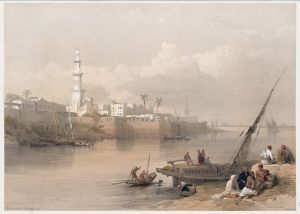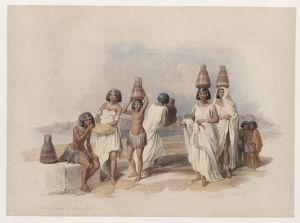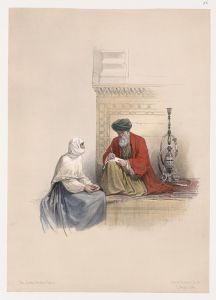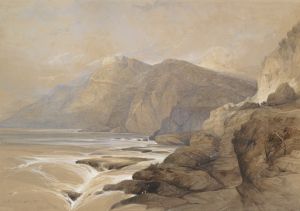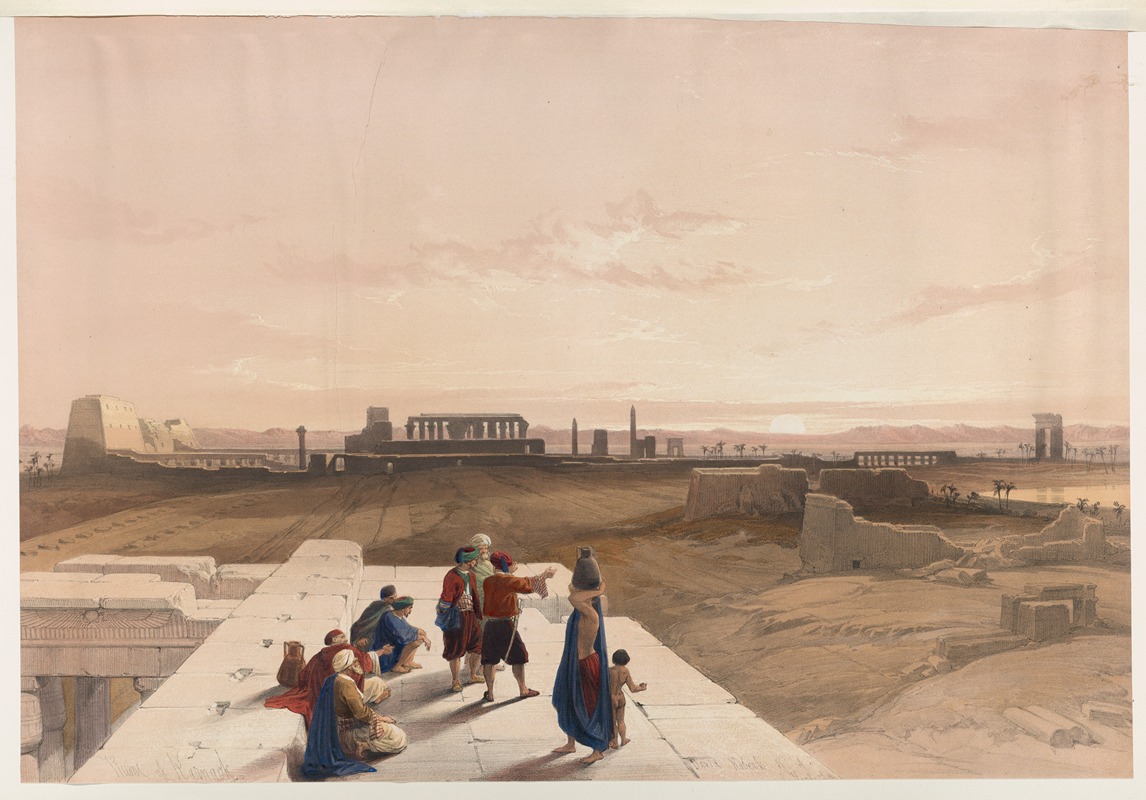
Ruins of Karnack [Karnak].
A hand-painted replica of David Roberts’s masterpiece Ruins of Karnack [Karnak]., meticulously crafted by professional artists to capture the true essence of the original. Each piece is created with museum-quality canvas and rare mineral pigments, carefully painted by experienced artists with delicate brushstrokes and rich, layered colors to perfectly recreate the texture of the original artwork. Unlike machine-printed reproductions, this hand-painted version brings the painting to life, infused with the artist’s emotions and skill in every stroke. Whether for personal collection or home decoration, it instantly elevates the artistic atmosphere of any space.
David Roberts' painting "Ruins of Karnack [Karnak]" is a notable work that captures the grandeur and historical significance of the Karnak Temple Complex in Luxor, Egypt. David Roberts, a Scottish painter born in 1796, is renowned for his detailed and romanticized depictions of ancient architecture and landscapes. His works played a significant role in popularizing the visual culture of the Middle East and North Africa in 19th-century Europe.
The Karnak Temple Complex, one of the largest religious complexes in the world, is a vast open-air museum and the second most visited historical site in Egypt, after the Giza Pyramids. It was primarily built during the Middle Kingdom and expanded over the next 1,300 years. The complex is dedicated to the Theban triad of Amun, Mut, and Khonsu, and it served as a significant religious center in ancient Egypt.
Roberts visited Egypt in the early 1830s, a time when European interest in the region was burgeoning due to both colonial interests and the allure of the ancient world. His journey was part of a larger expedition through the Middle East, which he undertook between 1838 and 1839. During this time, Roberts produced numerous sketches and studies that would later serve as the basis for his lithographs and paintings.
"Ruins of Karnack [Karnak]" is one of the many works that resulted from Roberts' travels. The painting is characterized by its meticulous attention to architectural detail and its ability to convey the scale and majesty of the ancient ruins. Roberts' work is often noted for its accuracy, as he took great care to depict the sites as he observed them, capturing both the grandeur and the decay of these ancient structures.
The painting likely features the Great Hypostyle Hall, one of the most famous parts of the Karnak complex, known for its 134 massive columns arranged in 16 rows. This hall is a testament to the architectural and engineering prowess of the ancient Egyptians. Roberts' depiction would have highlighted the interplay of light and shadow among the columns, a feature that has fascinated visitors for centuries.
Roberts' works, including "Ruins of Karnack [Karnak]," were published as lithographs by Louis Haghe in the series "The Holy Land, Syria, Idumea, Arabia, Egypt, and Nubia," which was released between 1842 and 1849. These publications were highly influential, providing many Europeans with their first visual impressions of these distant lands. The lithographs were praised for their artistic quality and their role in documenting the architectural heritage of the regions depicted.
Today, David Roberts' paintings and lithographs are valued not only for their artistic merit but also for their historical significance. They provide a visual record of sites that have since changed due to environmental and human factors. Roberts' work continues to be studied by historians, art enthusiasts, and those interested in the cultural heritage of the Middle East and North Africa.






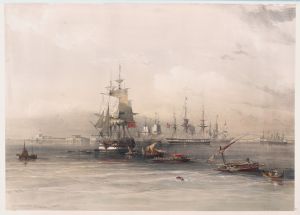
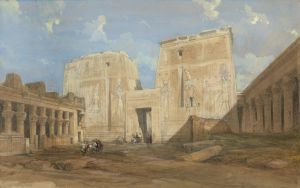
![Portico of the Temple of Edfou [Idfû], Upper Egypt. Nov. 23rd, 1838.](/imgs/217527/s/david-roberts-portico-of-the-temple-of-edfou-idfu-upper-egypt-nov-23rd-1838-79b6cf5b.jpg)
![Ruins. Temple on the Island of Biggeh [Bîga, Bîjah], Nubia.](/imgs/217537/s/david-roberts-ruins-temple-on-the-island-of-biggeh-biga-bijah-nubia-1cd1f41d.jpg)
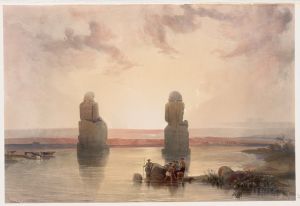
![Temple at Esneh [Isnâ]. Nov. 25th, 1838.](/imgs/217542/s/david-roberts-temple-at-esneh-isna-nov-25th-1838-c31fdf34.jpg)
![Temple of Edfou [Idfû], ancient Appolinopolis, Upper Egypt.](/imgs/217546/s/david-roberts-temple-of-edfou-idfu-ancient-appolinopolis-upper-egypt-2a77d2d6.jpg)
